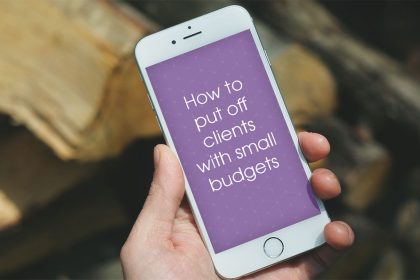Starting out as a freelancer? What to include in your first invoice
Just starting out as a freelancer and wondering what you need to include in your invoices? Here’s a quick guide to the seven things you need to add.
So you’ve just gone freelance and completed your first paid job. Congratulations! The next step is to actually get paid, and for that you’ll need to create and send an invoice. But what should you include in it?
What to include in your first freelance invoice
There are a number of key things your freelance invoice needs to include to make it possible for your client to pay you. It’s also important that your invoice looks professional, as it’s representing your business.
So, to help you write your first freelance invoice, here are seven things it needs to include.
1) Header
You want your invoice to look as professional as possible – you are a professional after all. That means you’ll have to create a professional-looking header.
In your header you should include your name or business name. Then, under your business name, add your contact information including phone number, email address and website link. If you have a logo then include it here too.
2) Your client’s details
After your header, it’s time to move onto your client’s information. You’ll need to display who the invoice is being made out to, so include your client’s name, address and contact information below the header.
3) Invoice information
It’s a good idea to have this next to your client’s information to make it clear for both of you. You should include details of the invoice including an invoice number (create your own numbering system that’s easy to keep track of), date the invoice was prepared and the payment due date.
The payment due date is up to you. Most invoices are around 30 days after completion of the work, but some are 45 or 60 days. Alternatively, you can put “due upon receipt” of the invoice so that the client knows that payment is required promptly.
If your client has a purchase order, or any other kind of reference, make sure you include this to prevent any hold ups.
4) Payment details
Next tell your client how you want to be paid. You will have to specify whether you prefer to be paid in cash, direct deposits or through online payment methods like Paypal.
Make sure you include details like your bank account number to make it easy as possible for your client to make the payment.
5) Late fees
Unfortunately late payments are something most, if not all, freelancers and small businesses experience at one point or another. So it’s wise to prepare for this by having a policy in place for late payments which you can detail in the invoice.
It’s also a good idea to discuss this and have it in writing as part of your contract before you start the work, so the client is fully aware of the consequences of late payments and isn’t surprised by this statement in the invoice.
Your payment terms are also only legally-binding if the client agrees to them when they instruct you to begin work. This is why it’s so important to create a contract (or basic terms and conditions) to send out with your quote when you’re pitching for work.
After all, why go to the trouble of creating a professional invoice if the terms of your work were vague and not in writing in the first place? (You’ll find more advice on this in the links at the end of this article.)
6) A breakdown of services
Next you will need to create a breakdown of services you have provided. You should also use this space to include any additional charges associated with the work.
You can create this manually in Microsoft Word with a table. In the table have a column each for:
- Description of the service.
- Hours/days worked (depending on how you charge your rate).
- Quantity.
- Rate.
- Subtotal and total.
7) Sign off
And finally, to sign off your invoice you might want to leave a thank you, a reminder of the due date or any additional information the client needs to know.
Then, once you’re happy with your freelance invoice, send it off – then make sure you keep track of any payment (or not) and chase promptly if it’s not paid on time.
Make sure your freelance invoice is paid
Nothing is more demoralising than working hard to complete a freelance project, only to struggle to get paid for it. So it’s important to practice good financial habits – and know your legal rights!
You’ll find more tips on getting paid for your freelance work in these articles. Please DO read them (and follow the advice in them) and ensure that you get properly paid for your efforts:
- Six bad money habits that are eating into your freelance income
- The art of getting paid quickly – seven tips for speedy invoice payments
- Nine tips to make sure you get paid for your work
- What to do when a client doesn’t pay your invoice
Don’t want to manually create an invoice? Pandle’s free bookkeeping software has an invoice creation tool so that all of your financial records are managed in the same place.










